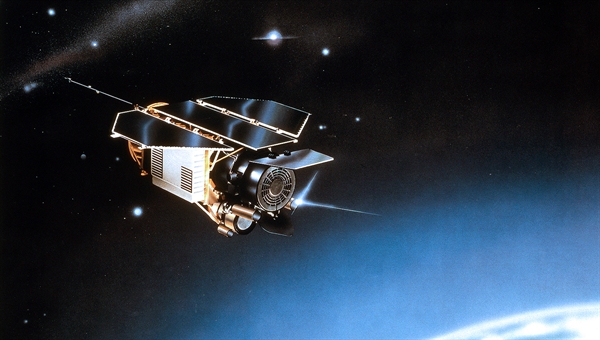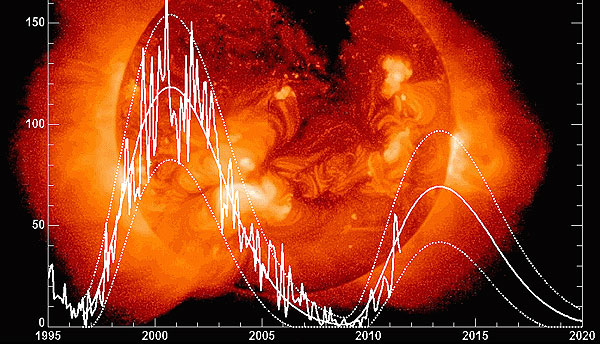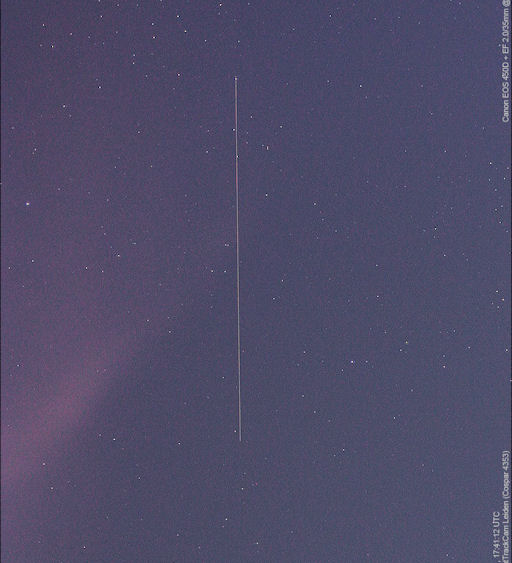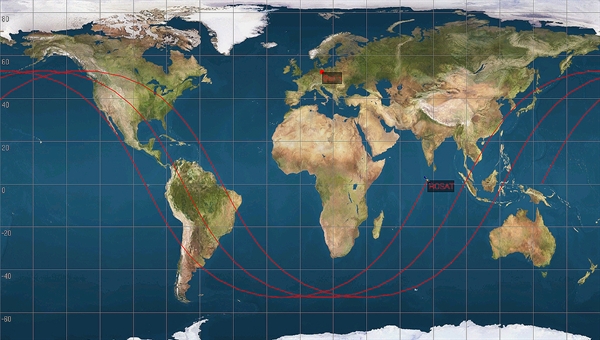ROSAT’s re-entry between Oct. 22nd and 24th over an unknown part of Earth

The ROSAT X-ray observatory, launched in 1990 by NASA and managed for years by the German Aerospace Center (DLR), will return to Earth within the next two weeks. Current best estimates place the re-entry between Oct. 22nd and 24th over an unknown part of Earth.
Although ROSAT is smaller and less massive than UARS, which grabbed headlines when it re-entered on Sept. 24th, more of ROSAT could reach the planet’s surface. This is because the observatory is made of heat-tolerant materials. According to a DLR study, as many as 30 individual pieces could survive the fires of re-entry. The largest single fragment would likely be the telescope’s mirror, which is very heat resistant and may weigh as much as 1.7 tons.

ROSAT will become even brighter in the nights ahead as it descends toward Earth. Local flyby times may be found on the web or on your smartphone. Also, check the German ROSAT re-entry page for updates.
Solar activity has strongly affected ROSAT’s decay. Only a few months ago, experts expected the satellite to re-enter in December. However, they did not anticipate the recent increase in sunspot count. Extreme ultraviolet radiation from sunspots has heated and “puffed up” Earth’s atmosphere, accelerating the rate of orbital decay. The massive observatory now has a date with its home planet in October. (SpaceWeather)
Scott Tilley of Roberts Creek, British Columbia, made a video of ROSATon Oct. 15th

The time and location of re-entry cannot be predicted precisely. At present, scientists expect the X-ray satellite, which completes an orbit around Earth in about 90 minutes, to re-enter around between 21 and 25 October 2011. Currently, the re-entry date can only be calculated to within plus/minus three days. This time slot of uncertainty will be reduced as the date of re-entry approaches. However, even one day before re-entry, the estimate will only be accurate to within plus/minus five hours .All areas under the orbit of ROSAT, which extends to 53 degrees northern and southern latitude could be affected by its re-entry. The bulk of the debris will impact near the ground track of the satellite. However, isolated fragments could fall to Earth in a 80 kilometre wide path along the track.
The primary causes of uncertainty in the estimation of a date of the re-entry date are the fluctuations in solar activity. Solar radiation heats up the Earth’s atmosphere and therefore increases the atmospheric drag. Short-term fluctuations in solar activity are governed by an 11 year activity cycle. At present, we are approaching the next maximum, which has turned out to be much lower than expected.

During the re-entry phase of the satellite, German scientists will be evaluating data from the US Space Surveillance Network (SSN). In addition, the Tracking and Imaging Radar (TIRA), the large radar facility at the Fraunhofer Institute for High-Frequency Physics and Radar Techniques in Wachtberg near Bonn will be monitoring the descent of the X-ray satellite to further improve calculations of its trajectory. Experts will be analysing the data obtained on behalf of the German Aerospace Center (DLR) to predict the moment of re-entry as accurately as possible. (DLR)
The ROSAT mission – frequently asked questions

Thank you for the very balanced coverage. Yes, TIRA will be actively monitoring the situation and is very well placed to provide an accurate ephemeris for the satellite prior to re-entry.
[…] be the telescope’s mirror, which is very heat resistant and may weigh as much as 1.7 tons.via The Watchers – ROSAT’s re-entry between Oct. 22nd and 24th over an unknown part of Earth. Sig Created by Arc TweetLeave a Reply Cancel replyYour email address will not be […]